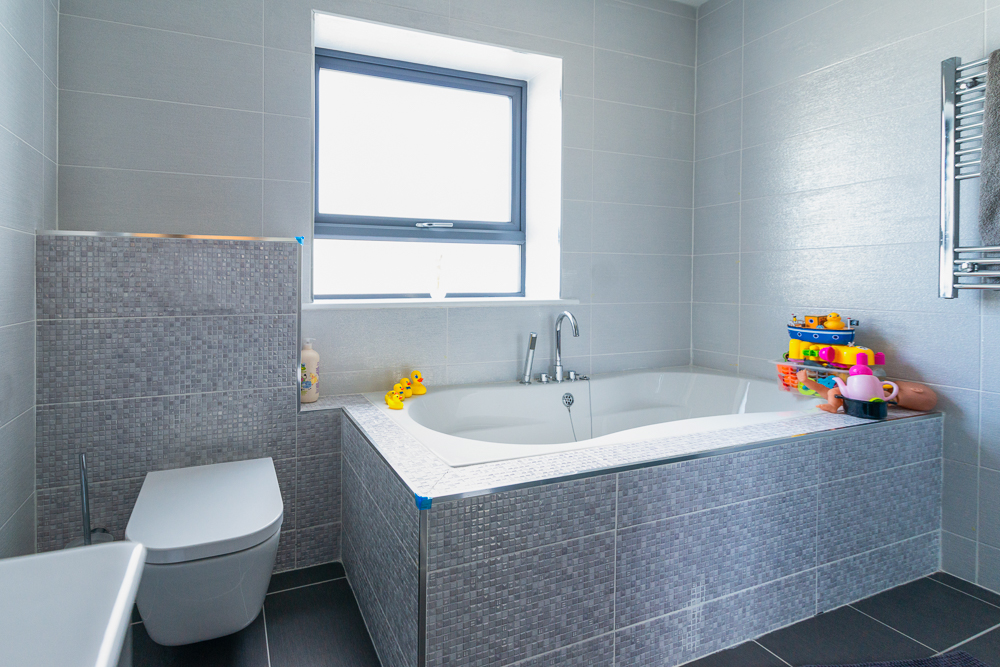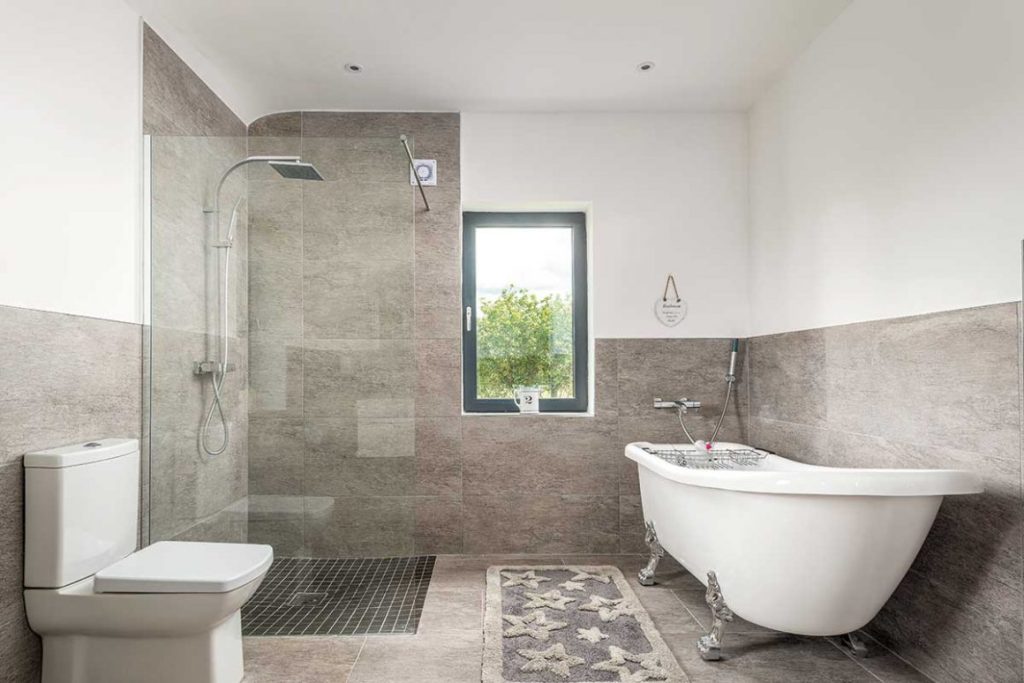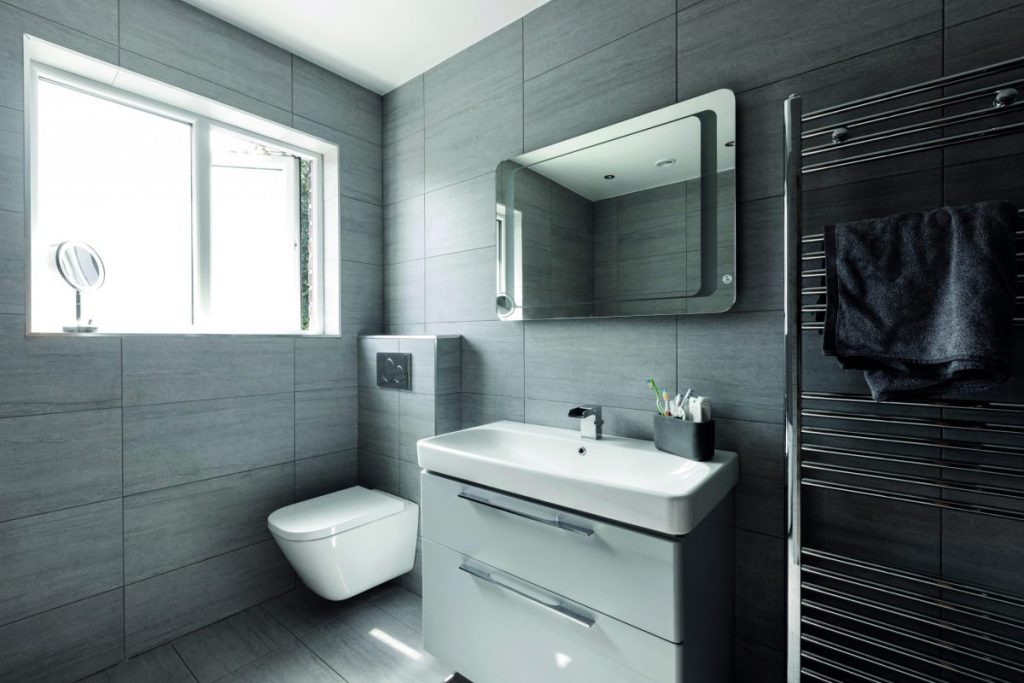When it comes to bathroom remodelling, the choices you make regarding floor and wall coverings can significantly impact the final look and feel of your space. While you’ll be painting the ceiling, selecting the right materials for your floor and walls requires careful consideration. The most common solution is bathroom tiles, but there are other alternatives that might suit your needs and budget better.
We’ll take you through each of these topics, providing insights and tips to help you make informed decisions that align with your preferences and budget. Whether you’re working with a small bathroom or a more extensive space, our guide will help you transform your bathroom into a functional and stylish retreat.
Design Choices When Tiling a Bathroom
When it comes to designing your bathroom, the choices you make regarding floor and wall coverings play a pivotal role. While the overall impact on the final cost might be minimal, these choices significantly influence the aesthetics and ambiance of the space.
Matching Finishes vs. Mixing and Matching
Decades ago, it was common practice to use the same type of tile for both walls and floors. However, recent trends have seen a move towards more creative approaches. Many homeowners opt to tile only the shower area, leaving the rest of the walls painted or adorned with other materials.
Another popular option is to tile or use wall panelling halfway up the bathroom walls and paint the remainder. Some even consider wallpaper for dry areas of the bathroom or spaces like understairs wcs. The possibilities are diverse, allowing you to express your unique style.

Bathroom Tiles Costs
Bathroom tiles are a ubiquitous choice due to their durability and suitability for wet areas. They come in a wide range of finishes and design styles, catering to various decor preferences. Let’s dive into the details of bathroom tile costs:
1. Ceramic Tiles: On the lower end of the cost scale, ceramic tiles can range from €30/£25 per square meter. These tiles offer a cost-effective solution for bathroom surfaces.
2. Porcelain Tiles: Porcelain tiles, which are highly popular in residential use, come at a slightly higher cost, averaging around €60/£55 per square meter. Their versatility and aesthetics make them a preferred choice.
3. Natural Stone Tiles: For those seeking a touch of luxury, natural stone tiles are an option, albeit at a higher price point. Expect to pay around €80/£75 per square meter for the timeless elegance of stone.
Choosing the Right Size
When selecting tiles for your bathroom, it’s essential to consider the size of the room. Opting for oversized tiles, like huge marble slabs, in a small bathroom can create an unbalanced and overwhelming look. Conversely, tiny tiles in a spacious bathroom may feel disjointed. Finding the right balance is key to achieving a harmonious design.
Slip Resistance Matters
Safety is paramount in the bathroom, and choosing slip-resistant tiles is crucial. Porcelain tiles, despite their popularity, may not always provide the desired slip resistance. Look for tiles with a minimum R9 rating for a slip-resistant finish to minimize accidents.

Exploring Alternatives to Bathroom Tiles
While bathroom tiles are a classic choice, modern alternatives offer budget-friendly and eco-conscious options. Let’s delve into some of the alternatives:
1. Vinyl Flooring: Vinyl has come a long way since its 1970s heyday. Today, it offers an array of colors, patterns, and styles, including stone and wood effects. Luxury Vinyl Tile (LVT) is a popular choice, known for its warmth underfoot and noise-reducing foam backing. Non-slip vinyl sheet surfaces are ideal for wheelchair users, but ensure your wetroom trays are compatible with vinyl flooring.
2. Polished Concrete: Polished concrete has gained popularity in recent years for its sleek, industrial look. While it falls on the higher end of the cost spectrum at around €120/£100 per square meter, its durability and contemporary appeal make it a worthy investment.
3. Timber: Timber flooring adds warmth and character to a bathroom. Prices can vary, with options ranging from €50-€80/£40-80 per square meter. Ensure that solid wood is stained with a waterproof finish for bathroom areas to prevent damage.
4. Linoleum: Linoleum is a cost-effective and eco-friendly choice, with prices typically falling below €50/£40 per square meter. It’s easy to maintain and comes in various colors and patterns.
5. Wall Coverings: Feature panelling, which can cost at least €/£100 per square meter, and wainscotting type cladding (€60-80/£50-80 per square meter) are making a comeback for bathroom walls. These options add texture and character to your space.
6. Natural and Eco-Friendly Options: Consider materials like pretreated cork and bamboo for flooring. Additionally, explore natural and eco-friendly paints, but ensure they are suitable for bathroom use.
When making your decision, it’s essential to factor in your budget, maintenance preferences, and the overall aesthetic you want to achieve in your bathroom.

Wrapping Up
Selecting the right floor and wall coverings for your bathroom can transform your space from mundane to magnificent. Bathroom tiles, with their durability and design versatility, remain a popular choice. However, exploring alternatives like vinyl, polished concrete, timber, and wall coverings can open up new possibilities while accommodating various budgets and style preferences.
As you embark on your bathroom remodeling journey, consider the size of your bathroom, slip resistance, and the overall look you want to achieve. With these factors in mind, you can create a bathroom that not only meets your functional needs but also reflects your personal style.
Remember that your bathroom should be a space of comfort and relaxation, and the right choice of floor and wall coverings can set the tone for a rejuvenating bathing experience. Whether you opt for the timeless appeal of bathroom tiles or explore innovative alternatives, your choices will play a pivotal role in creating the bathroom of your dreams.




